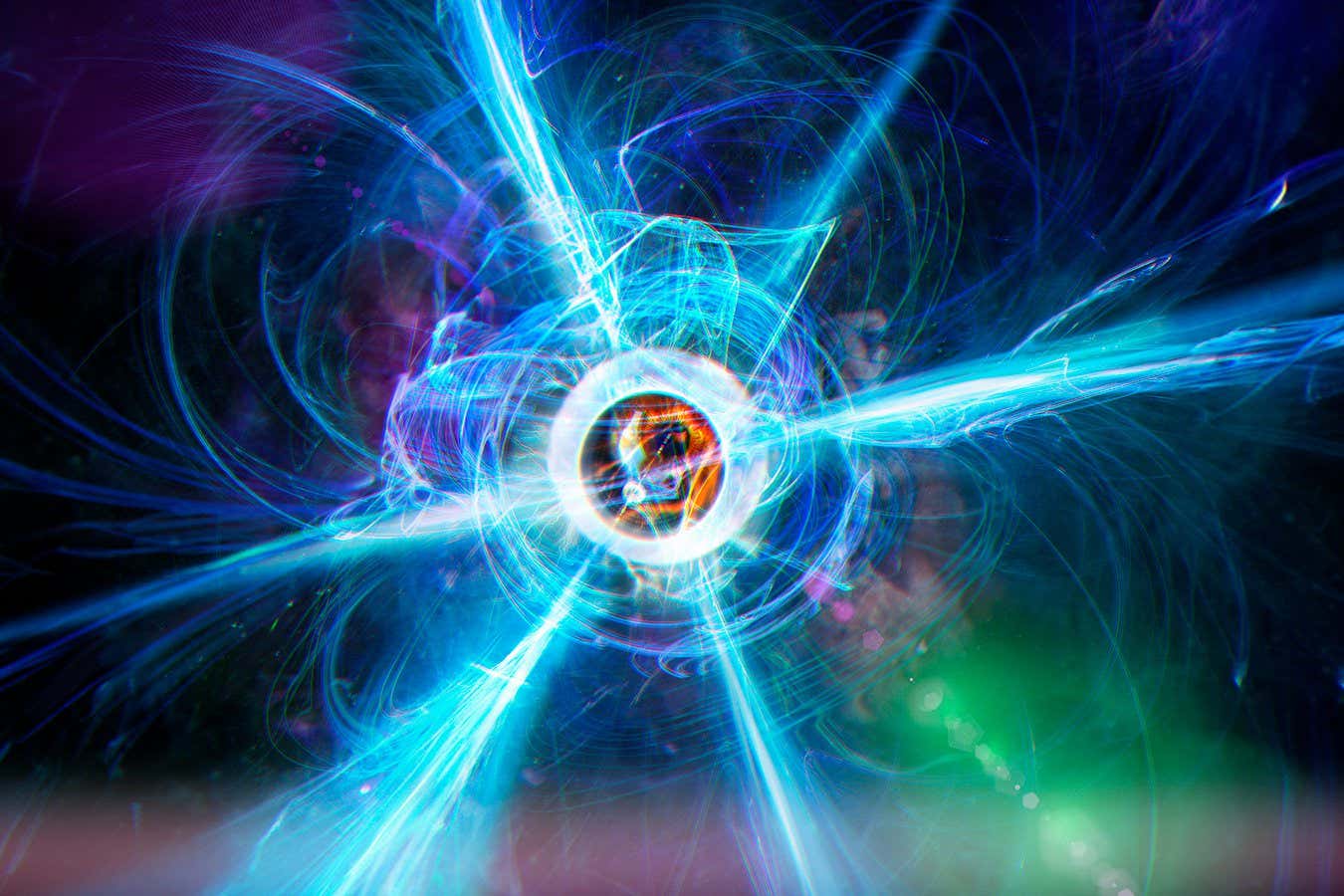Researchers manipulated thousands of extremely cold atoms to make a ring-like defect that can change the properties of quantum objects that pass through it
By Karmela Padavic-Callaghan
29 August 2023
Artistic illustration of an Alice ring, which has been observed for the first time
Heikka Valja/Aalto University
Physicists have peered through the proverbial looking glass, and the atoms on the other side belong to a world of opposites. For the first time, researchers have made an exotic quantum object called an Alice ring, which changes the properties of other quantum objects when they pass through it – or when they are simply viewed through it.
Quantum systems – such as collections of very cold atoms, or even our whole universe – should theoretically contain odd objects called topological defects. Some are like long strings, and others are stranger still: Zero-dimensional dots, at the centre of which things like magnetic fields become mathematically impossible to describe.
Such defects are difficult to create and observe. But Mikko Möttönen at Aalto University in Finland and his colleagues have worked out how to create a topological defect that quickly transforms into another.
Advertisement
Read more:
New kind of camera can image mini-whirlpools in quantum liquids
To do it, they first placed 250,000 rubidium atoms into a small chamber devoid of air, then hit them with lasers to slow their natural motion and push them to a temperature close to absolute zero. Under these conditions, all the atoms behaved as one large quantum object. Because of a quantum property called spin, that object was sensitive to magnetic fields.
Möttönen says the team used computer simulations and mathematical models to determine how to pattern the direction and strength of magnetic fields in order to twist the atoms until a topological defect appeared. This approach had previously been used to create defects called monopoles, particles analogous to a magnet with a single pole.
